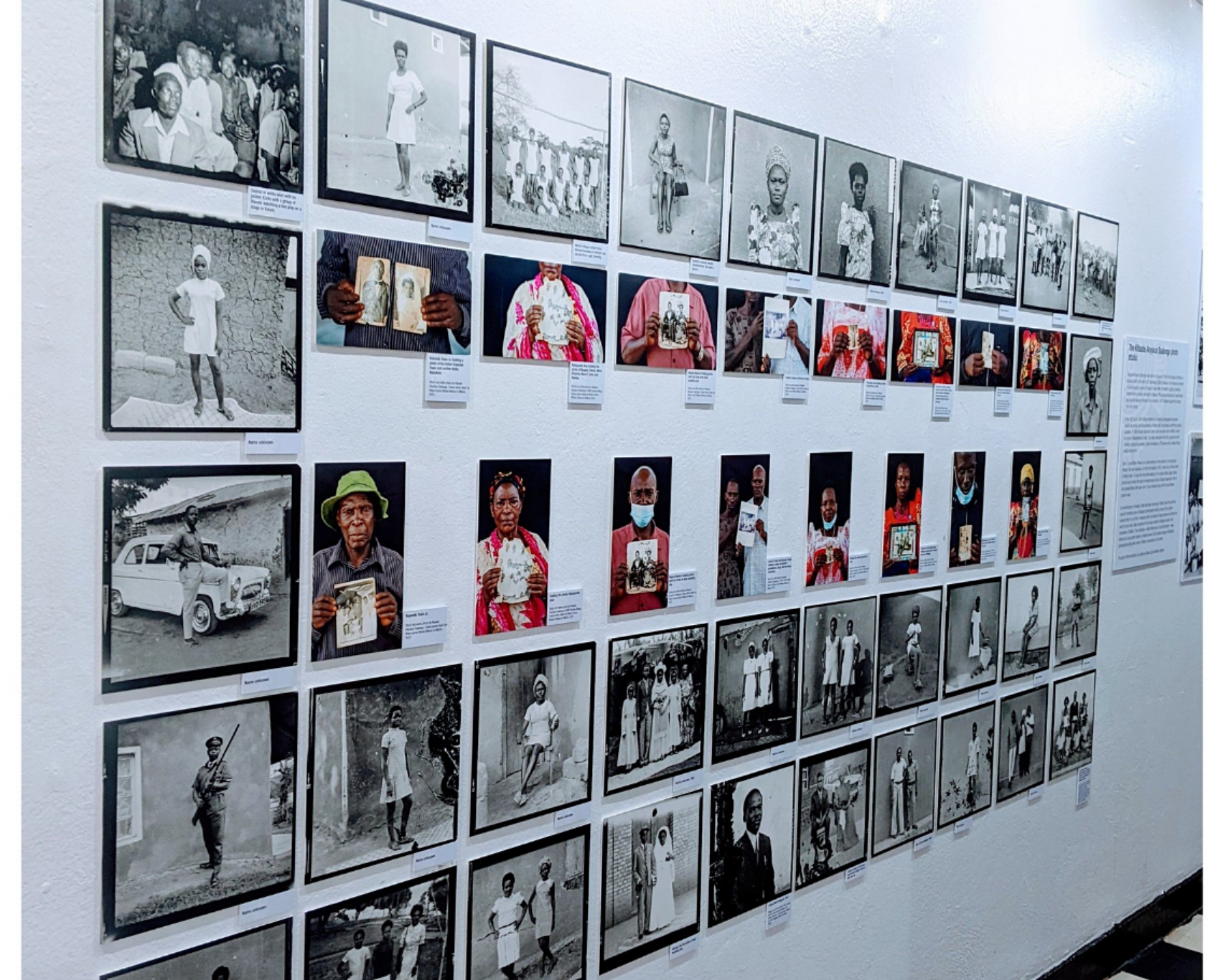Art has always been a creative way to preserve history, presenting various views and scenarios through the ages.
There are various ways to tell compelling stories and photography happens to be one among them. A still photo can tell so many words and have a perpetual impression.
A photographer is a window to places that we all can’t be. We have seen the power of photography in telling stories of the Covid19 pandemic, the Russian attack on Ukraine, or other situations of conflict where access is life-threatening.
Photos also help us relive beautiful memories, like wedding, graduation and celebration. We hang these still portraits in our living rooms to remind us of these endearing stories in perpetuity.
As I stood in one of the corridors at the Uganda Museum staring at black and white photos some taken as far back as 1957, I couldn’t help but be astonished at how much life in Uganda has changed.
The fashion evolution, a shift from days when the photographer was a power-wielding monopoly to now that everyone is a photographer, and the changing technology itself (B&W vs. color photography, hardcopy vs. softcopy).
The exhibition curated by Ugandan-American actor, photographer, and documentarian, Ntare Guma Mbaho Mwine, centered around the work of Kibaate Aloysius Ssalongo.
Born on August 24, 1939 in Kitoma, Masaka district, Kibaate took interest in photography at around 18 years when his brother bought a Rolleiflex camera from an Indian merchant in Masaka. They quickly discovered it was Kibaate who had an interest in the camera, so in 1957 he bought the camera from his brother. He opened a studio in Mbirizi which he named ‘Akwatempola Studio’.
In 2001 when Ntare met Kibaate and was impressed by the huge chunk of archived negatives, little did he know how much power this work would have in the future. Even long after the photographer died, his work united people that never met him, with their families.

Ssenjeri Bashir, a Ugandan tour driver, has been working with Ntare for 7 years on a project to bring back the work captured by Kibaate to life.
He narrated to Plugged how he witnessed people who lived in the 60s get gripped in priceless emotion after seeing photos that they had never seen. There are children who never saw their parents but only got to see them through Kibaate’s work after it was exhibited by Ntare.

For example, a lady called Nakimera who was a bar owner in Masaka in the 60s and was regarded the most beautiful in that area at the time. It is said she frequently became romantically involved with her rich clientele. With some, she spent a month or two as long as they had the money to cater for her needs.
“It was like part-time marriage, she would be with you for a while and then she would get another person,” Ssenjeri said.
In December 2019 when Ntare held an exhibition in Mbirizi of photos captured by Kibaate, a man had been roaming at the exhibition when he came across photos of his mom (Nakimera). All his life, he had only seen one photo of his mom. At the exhibit, he got a chance to discover numerous other images of his mom that he had never seen. He also discovered a photo of his mom with his grandmother that he had never seen before. Ntare made sure he got copies of the images he wanted.
ALSO READ: “Uganda remains home” – American actor Ntare Mwine on death of his mom
Ntare says Kibaate’s is a rich history that was never shared outside greater Masaka. He only took photos and handed them to his clients. He had no interest in exhibiting them.

“Nobody besides those people he photographed knew about his work. When I met him, I was blown away by his images. And I said ‘We have to do an exhibit or a book’. At that time, I was performing my play Biro, and his photographs were part of the play. And it was incredible,” Ntare told Plugged after the exhibition in Kampala last month.
Unfortunately, Kibaate died in November 2006, before Ntare’s plans had materialized.
Ntare recalls a young boy who had lost his dad at a very tender age. He had no visual memory of his dad. At the exhibition in Mbirizi, the kid’s uncle (brother to late dad) recognized a photo of his late brother.
“He (uncle) called the kid to say ‘This is your father. It was the first time the kid was seeing the father’. There were so many pictures like that where people were discovering and reconnecting with their ancestors.”
The exhibition titled ‘Memories of Love Returned’ featured over 5,000 printed images of Kibaate’s photography along with some of Ntare’s recreations of his work.

In remembrance of Kibaate, Ntare has been returning to Mbirizi over the past few years to recreate some of Kibaate’s photographs with as many original subjects as he could find.
Towards the end of last year, the Uganda Museum reached out to Ntare to showcase Kibaate’s work during the ‘Uganda At 60’ history exhibition. The exhibition was officially opened by President Yoweri Museveni in October. Kibaate’s family (his three wives and over half a dozen of his children) attended the event, having been facilitated by Ntare.

The actor is holding an exhibition (similar to the one he did in Mbirizi) in Delaware, the small Mid-Atlantic U.S. state that sits borders the Atlantic Ocean. The exhibit in Delaware opened on February 3 at the Delaware Contemporary and will run until August 27.
The internet era which is characterized by smartphones with high-res cameras, Instagram and photo filter effects has rendered hard-copy photographs obsolete. People no longer go to photo studios.
And it is this trend that Ntare hopes the Kibaate project can cause everyone to rethink.
“We rarely print photos anymore. I hope that at least people get an appreciation of seeing these images up on the wall. I’m also excited that the exhibit is reaching some of the kids who have never been to the Uganda museum. For them to see blown-up pictures in black and white because they didn’t even know that could happen,” Ntare said.

He says the biggest highlight so far for him has been how Kibaate’s body of work has reunited families.
The actor who appeared in the 2020 American drama film, Farewell Amor, is due to release a documentary about Kibaate. It has been 20 years in the making.
“I had filmed footage of him in his studio because I just love documenting stuff. So that footage which has never been seen by anyone will be incorporated into the documentary,” says Ntare, known for TV roles in The Chi, Treme, Netflix’s The Lincoln Lawyer andThe Knick which was produced and directed by Oscar winner, Steven Soderbergh (who will also be producer on the Kibaate documentary film).
“I sat down with his family members and said ‘I have footage of your father that I never showed you, so let’s watch it together. And if it’s okay with you, I would like to include it in the documentary and screen it for the general public’. So, they gave me their blessings. And I filmed them watching the footage. It was really an emotional moment, especially for the grandkids who never met him.”
The film will be premiered during this year’s Uganda Film Festival.
The documentary will be on top of other new upcoming TV series that Ntare is starring in – Dead Ringers (where he plays opposite Oscar winner Rachel Weisz) on Amazon and Washington Black on Hulu.
Sharon Karamagi, an art enthusiast who attended the Kampala exhibition was struck by many things about Kibaate’s work, including the nostalgia of the late 80s and film photography.
“I’m sure the new generation, the digital age, can’t relate with the vintage gadgets that we used to use. For me, this was a nostalgic experience. And I like that Ntare married the two – the past (Kibaate’s photos) and the present (people that he was able to interview and those who had the chance to meet Kibaate,” Karamagi said.
“It was good to see the contrast of the black and white, then brought in the color. More like analog to the digital age. It was interesting.”
She says the exhibition was a window into how much civilization has evolved. But even more important to give the younger generation a sense of their background.
Among other things that stood out for her was Kibaate’s life itself. The photographer had three wives and nine other women with whom he had children but was not married to. Not even his wives knew the total number of children he sired.

Kibaate’s influence was not just limited to Greater Masaka. One of the photos displayed during the Kampala exhibition showed a man posing with his first paycheck. That man was Martin Lubyayi Muguzi, the first member of Parliament for Greater Masaka – the nine districts.
He also had an indefatigable spirit toward his work. So much so that in the period before he acquired a motorcycle, Kibaate would ride his bicycle from Mbirizi to Kampala (166 kms). He also traveled to parts of Sembabule (38 kms) and Kyotera (39 kms) back to Mbirizi on his bicycle. There were times he rode over 80 kms to visit his brother who lived in Tanzania.








